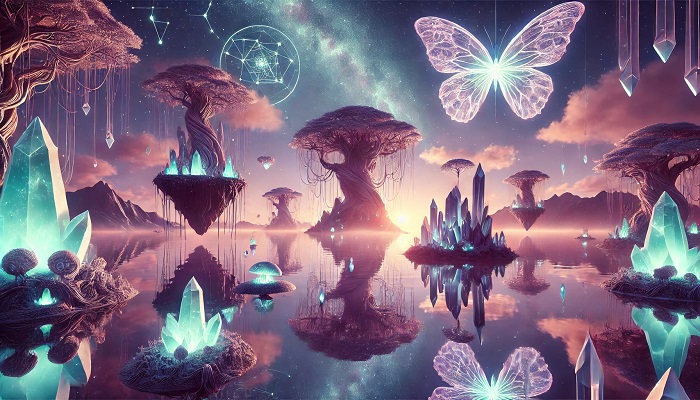In recent years, the world of digital art has been shaken by the advent of artificial intelligence. One of the most exciting applications of this technology is in the creation of surreal landscapes – dreamlike vistas that push the boundaries of imagination and reality. This guide will explore how digital artists can harness the power of AI to craft stunning, otherworldly landscapes that captivate and inspire.
Understanding AI-Generated Landscapes
AI models are trained on vast datasets of images, learning to recognize patterns and features that make up different types of landscapes. When given a prompt, these models use their training to generate new images that match the description.
The key advantage of AI in landscape creation is its ability to quickly generate unique and unexpected combinations of elements. However, it’s important to note that AI is a tool to augment creativity, not replace it. The artist’s vision and input remain crucial in guiding the AI and refining its output.
Popular AI Tools for Landscape Generation
Several AI tools have emerged as favorites among digital artists for creating surreal landscapes:
- Midjourney: Known for its artistic flair and ability to create highly stylized images.
- DALL-E: Excels in generating diverse and often unexpected results.
- Stable Diffusion: Open-source option with a wide range of applications and community-created models.
- AI-powered plugins: Tools like the Firefly series for Adobe Photoshop, which integrate AI generation into familiar software.
Techniques for Creating Surreal Landscapes
To create truly surreal landscapes, consider these techniques:
- Combining unexpected elements: Merge disparate concepts, like floating islands with underwater scenes.
- Manipulating scale and perspective: Play with the size relationships between objects to create a sense of the uncanny.
- Using unconventional color palettes: Experiment with colors that wouldn’t occur in nature to enhance the surreal feel.
- Incorporating abstract shapes and forms: Blend recognizable landscape elements with abstract geometric shapes.
Step-by-Step Guide: Creating a Surreal Landscape
- Choose your AI tool: Select the tool that best fits your style and needs.
- Craft effective prompts: The key to getting good results is in the prompt. Be specific about elements you want, but leave room for the AI to interpret. For example: “A desert landscape with floating crystal pyramids, bioluminescent plants, and two moons in a purple sky”
- Iterate and refine: Generate multiple versions, tweaking your prompt each time based on the results.
- Post-process and enhance: Use traditional digital art tools to refine the AI-generated image, adding your personal touch and ensuring coherence in the final piece.
Adding Motion: From Static to Dynamic Landscapes
While static images are powerful, adding motion can take your surreal landscapes to the next level. AI video generation tools are opening up new possibilities for creating dynamic, moving landscapes.
One such tool is Luma AI, which allows artists to transform static images into fluid, dreamlike animations. These tools can bring your surreal landscapes to life, adding an extra dimension of wonder and immersion.
For a detailed guide on using one of these tools, check out this Luma Dream Machine tutorial, which walks you through the process of animating your AI-generated landscapes.
Conclusion
AI tools have opened up exciting new possibilities for creating surreal landscapes, allowing digital artists to push the boundaries of their imagination. By combining AI generation with traditional digital art skills and a strong artistic vision, you can create stunning, unique landscapes that were once impossible or extremely time-consuming to produce.
Remember, while AI is a powerful tool, it’s your creativity and artistic judgment that will truly make your surreal landscapes stand out. Embrace the technology, experiment freely, and let your imagination soar. The world of AI-generated art is still in its infancy, and as an artist, you have the opportunity to help shape its future.
Now, armed with these tools and techniques, it’s time to start creating your own AI-assisted surreal landscapes. What impossible worlds will you bring to life?


